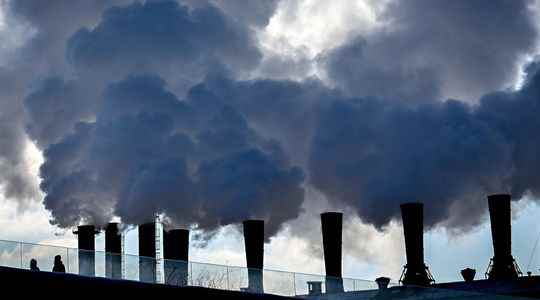How can we slow down global warming and its consequences? The Intergovernmental Panel on Climate Change (IPCC) published this Monday, April 4 the third part of its sixth assessment report, focusing on solutions to reduce greenhouse gas emissions on a global scale. overall.
While the first part of the report, released in August 2021, once again consolidated the scientific evidence of the impact of human activities on climate change, a second report, released at the end of February, painted a grim picture of its impacts on the population. and ecosystems, and highlighted their vulnerability. This time, the scientists looked at the very political side of the solutions to reduce CO2 emissions.
And the message could almost seem optimistic: the solutions exist to manage to contain global warming. “The assessment of mitigation options shows that there are options available today in all sectors to help reduce emissions by 2030”, explains Céline Guivarch, research director at Cired (International Center of Research on Environment and Development) and one of the authors of the report. But containing global warming to 1.5°C remains impossible with current commitments, and they require “major changes in all sectors”, she insists. Climate experts note that humanity has less than three years to reverse the curve of greenhouse gas emissions, if it wants to maintain a “liveable” world. Clearly, the peak of CO2 emissions must be reached in 2025.
Don’t rely on technology alone
The use of fossil fuels must be greatly reduced by 2050 to meet the major objective of the Paris Agreement. The use of coal should be completely stopped and those of oil and gas reduced by 60% and 70%, respectively, by 2050 compared to 2019 levels, and “virtually all the world’s production of electricity must come from zero or low carbon sources”, warns the IPCC. This report focused for the first time on technologies for capturing carbon emissions. The process, which is still at the development stage today, is not considered mature, yet it holds an important place in the commitments of certain countries, which bet on these “negative emissions”, to ensure a neutral balance in carbon in 2050.
“We must be able to reduce positive emissions very clearly, but so-called ‘residual’ emissions remain, and that is why they must be offset by negative emissions”, explains Céline Guivarch. A panel of solutions is based on different types of carbon absorption, geologically or geochemically through reforestation or agroforestry, but also through technical solutions. But it is still necessary to dose them well and not bet everything on innovation. “The message conveyed by technologies can be problematic, we could say to ourselves: let’s not change anything and with technology we will capture all the CO2 that we will have emitted”, warns Nadia Maïzi, main author of the sixth IPCC report, professor and laboratory director at Mines Paris.
Investments must be three to six times greater
In a chapter on energy demand, the IPCC also raises the issue of sobriety. Acting on the demand for energy and the consumption of goods and services would reduce greenhouse gas emissions by 40 to 70% by 2050, experts estimate. If the word sobriety is not used, the idea is posed. “Having public policies, infrastructures and technology to make changes in our lifestyles and behaviors possible (…) offers significant untapped (reduction) potential”, underlined Priyadarshi Shukla, one of the co-presidents of the Expert Group.
This summary, particularly dense and complex on first reading, is above all a document enabling managers to make the right decisions. “It is based on nearly 18,000 studies that had to be digested and evaluated. But behind there is a decision-maker who must take charge, it is he who must design with all these elements a global policy which would integrate all these teachings”, evokes Nadia Maïzi. However, for the time being, scientists are not sufficiently listened to.
“The coming decade is critical to increase our chances of positioning ourselves on the right trajectory, which is why the decisions that will be taken are crucial in the years to come”, underlines Raphaël Jachnik, climate finance specialist at the OECD. In order to limit global warming below 2°C, investments for this decade must be three to six times higher than they are now. But according to the researchers, “there is enough global capital and liquidity to fill these investment gaps.” Stop investments in fossil fuels, but also strengthen skills development in key sectors such as renewable energies or energy efficiency. Good news, renewable energies have demonstrated their profitability, note the authors of the report.
France does not meet its objectives, according to Greenpeace
This report also comes at a particularly difficult time. The war in Ukraine which broke out when the second part of the report was published may have eclipsed part of the media coverage hoped for by scientists and ecologists. “Optimal reception conditions are always difficult to obtain, something always happens, but this time the context in France is all the more particular since there is the presidential election, and this report is more political than the others”, notes Clément Sénéchal, climate campaign manager for Greenpeace France. The opportunity to send a clear message: “This mandate ends when France does not achieve the objectives it has set itself since the Paris summit, and the IPCC tells us that we cannot allow it”, judges the activist.
Behind the scenes, negotiations to finalize the new report of the Intergovernmental Panel on Climate Change ended Sunday evening more than 48 hours late. The results were finally made public nearly a day behind schedule.
